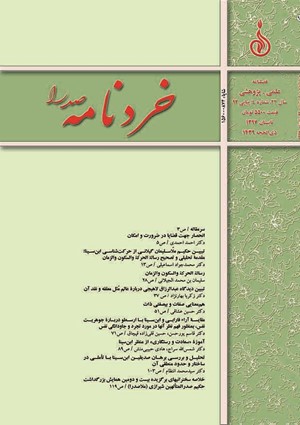هممعنايي صفات و بيصفتي ذات
محورهای موضوعی :
1 - پژوهشگاه فرهنگ و انديشه اسلامي
کلید واژه: صفات ذاتي ذات و صفات هممعنايي صفات بيصفتي ذات عرفا فلاسفه اشاعره ,
چکیده مقاله :
دربارة رابطة «صفات ذاتي» با «ذات حق» سه ديدگاه مهم وجود دارد. اشاعره به زيادت وجود صفات بر وجود ذات حق و تخالف معاني آنها با هم و با ذات حق معتقدند، عموم فلاسفه به عينيت موجوديت حقيقي صفات با وجود ذات حق و در عين حال، به تخالف معاني آنها با هم و با ذات حق قائلند و عرفا به بيصفتي ذات حق، هممعنايي صفات و ذات، موجوديت بالعرض صفات متخالف المعني به عين وجود حق و تأخر آنها از ذات حق باور دارند. بنظر ميرسد بر خلاف ديدگاه اشاعره و فلاسفه، كه هر دو گرفتار اشكالات عقلي و نقليند، حقانيت ديدگاه عرفا با شواهد عقلي و نقلي فراوان قابل اثبات است.
There are three views regarding the relationship between “essential attributes” and the “Essence of the Truth”. The Ash‘arites believed in the addition of the existence of attributes to the existence of the Essence of the Truth and the differences of their meanings from each other and from the Essence of the Truth. However, most philosophers acknowledge the identity of the real co-existence of attributes with the existence of the Essence of the Truth and, at the same time, believe in the differences mentioned above. Moreover, gnostics believe that the Essence of the Truth is free from attributes and maintain that attributes are of the same meaning with the Essence of the Truth. They also emphasize that contrasting attributes exist by accident in relation to the very existence of the Truth and are posterior to it. It seems that, unlike the Ash‘arites and other philosophers, who both suffer from some rational and traditional problems, the truth of gnostics’ view can be demonstrated based on several rational and traditional proofs.
